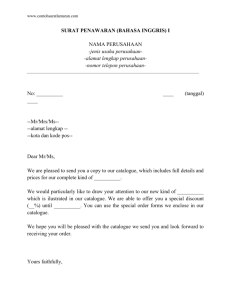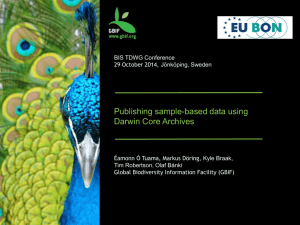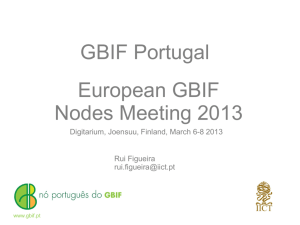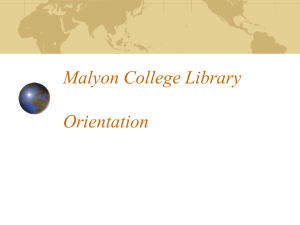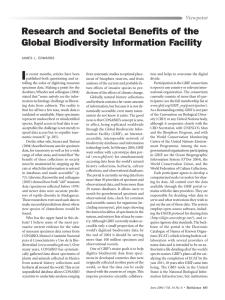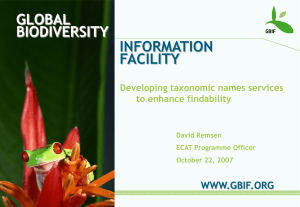GBIF - ECAT
advertisement
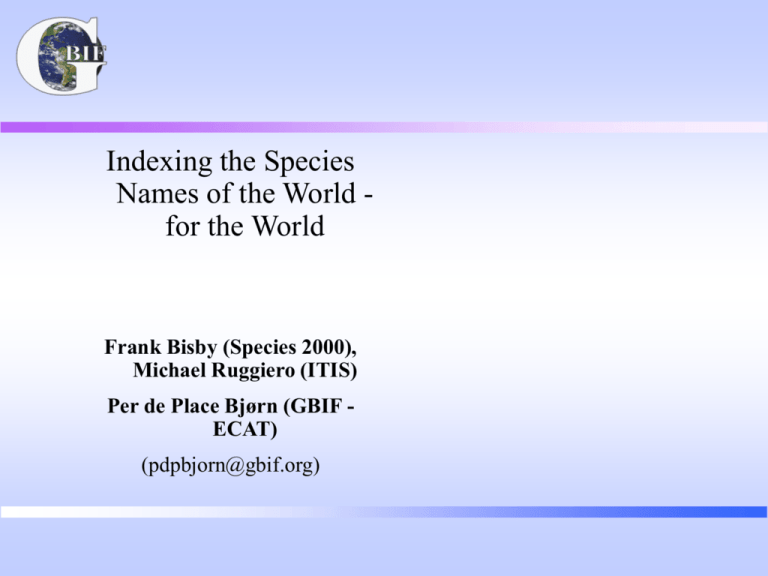
Indexing the Species Names of the World for the World Frank Bisby (Species 2000), Michael Ruggiero (ITIS) Per de Place Bjørn (GBIF ECAT) (pdpbjorn@gbif.org) Names NAMES = KNOWLEDGE Identifiers: taxonomic concepts Indexes: names as locators Classification: relationships Linkages and searches: data bases and internet The GBIF Portal Content area responsibilities of GBIF Biological Specimen Data GenBank, et al. Electronic Electronic Catalog Catalogof of Names Names Sequence Data (RNA, protein, etc.) Geospatial Data Climate Data Search Engines Data Access/ Interoperability Ecosystems Data Ecological Data Existing responsibilities of other groups Catalogued vs. Uncatalogued Species 1.750.000 scientific species names Catalogued Uncatalogued Catalog of Life: ITIS and SPECIES 2000 Central data base Distributed data base North America + some global Global only Mostly governmental Mostly non-governmental Base funded Grant funded Permanent, full time staff Non-permanent, part time staff Accepted Name, Synonym(s), Common Name(s) Accepted Name, Synonym(s), Common Name(s) Name, Author, Reference, Date, Name, Author, Reference, Date, Distribution, Number Distribution (option) Catalogue of Life 2000: Contributors Database Name Species Synonyms Common names BIOS CephBase FishBase ILDIS IOPI ITIS 2000 Phyllachorales 4,867 686 25,137 17,695 392 144,044 1,331 2909 490 45,964 20,805 757 46,855 1,295 -1101 108,115 6,210 -52,473 -- Rhytismatales 352 311 -- 15,807 8,325 5,474 9,480 -182 238 39 -- 4,540 163 471 -239 623 ---- Scarabaeidae Seaweeds 2000 Trichomycetes URMO Xylariaceae Zygomycetes ITIS Global Species Databases in Catalogue of Life Scleractinia Polychaeta Genera Lobsters and Shrimps Isopoda Diptera Formicidae Trichoptera Turtles Crocodiles Birds GBIF - ECAT The Electronic Catalogue of Names of Known Organisms GBIF – ECAT: STAG Recommendations Common Goal for ITIS, Species 2000, GBIF is a Global Checklist of Names of Known Organisms = at least 1.75 Million accepted names Functions Locate a species by name or in a hierarchy Provide lists of species, synonyms Provide links to data bases, nomenclators, and hierarchies Track changes in taxon concepts and applications of names Provide automated access for electronic systems Catalog of Life: STAG Recommendations Content Essential: Accepted scientific name and reference, source data base, latest taxonomic scrutiny Essential, if available: Synonyms, common names, parent link, and geography System Architecture Network of global and regional data bases Targets 2002: 300 K species; 2003: 500 K species; 2011: 1.75 M species Overall Goal: Create a catalogue of names of all known organisms to serve as: 1. a reference to the taxonomical community and common users at large 2. an authority file for taxonomic names 3. a core dictionary file for the GBIF Network – GBIF Name Service This is done by: Partnering with existing and future names gathering institutions – collaborating on indexing of life Working with the Catalogue of Life Consortium to establish Catalogue of Life Using the Catalogue in the internal GBIF data structure Short Term Goals: To do within the next year Assess the state of the indexing universe Review existing syntheses (e.g., Species 2000, ITIS), call for contributions from indexing organizations and individuals. Report/graphical representation on available resources, summarizing the indexing of life Invite already existing indexes and organisations – partner with CoL Call for participation, specifying that indexes needs not have world-wide coverage in order to participate Form participation agreements with geographically based indexes Work shop GBIF Name Service Create Name Service to serve the GBIF Network and the world. First implementation will contain mainly data from regional indexing initiatives and CoL Hierarchies… Promote and sustain large and small indexing activities. Use seed money to speed up or finish existing projects Initiate regionally oriented names-gathering organizations (comparable to ITIS or Fauna Euopaea) in relevant parts of the world Call for participation + develop invitations Develop procedures for application, review, cost sharing Mid Term Goals To do within the following one to two years Encourage working groups of experts on non-indexed organism groups and geographical areas Calls for proposals from the taxonomical communities, larger institutions, scientific societies Support the communication infrastructure of these communities by providing web sites, discussion fora etc. Seed money for limited activation initiatives, workshops Ultimate Goals To do within five to ten years Complete Catalogue Goal Catalogue in use and containing the majority of scientific names When Ultimo 2005: 40% of all scientific names indexed Ultimo 2013: 90% of all scientific names indexed Inclusion of Common Names What Reasonable share of the world’s common names included in the Catalogue How Contractor to establish proposal for polices Contractor or ECAT to collect and incorporate names When Ultimo 2005: 15% of all common names indexed Ultimo 2013: 40% of all common names indexed ECAT Budget 2003 Assess the state of the indexing universe $10.000 Invite already existing indexes and organisations $100.000 GBIF Name Service Promote and sustain large and small indexing activities $10.000 $500.000 ------------$620.000 ECAT Funding Guidelines 2003 Funding priorities to be developed through consultative process Proposal review process to be as open as possible Seed money - provide grants of up to 20% of the total project cost - to a maximum of $50,000 US

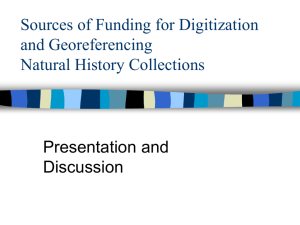
![[#PF-1998] subordintated taxa of Xenillidae](http://s3.studylib.net/store/data/007613529_2-36b265815b5d8ce7df1b35bae74e1254-300x300.png)
